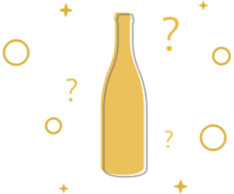Not since the 1950s, when French producers proclaimed “Le Beaujolais Nouveau est arrivè” for the first time, has the world celebrated a brand-new style of wine with such enthusiasm. To be clear, Prosecco Rosé is not produced as a “Nouveau” – meaning it’s not a fresh young wine bottled within two months of harvest. Prosecco Rosé is new because it just became a legal labeling term in 2020. The 2019 vintage (legalized retroactively) began shipping in November, and the 2020s are not far behind – just in time for Valentine’s Day. After years of deliberation and negotiation among the region’s 347 sparkling wine producers, they have combined the two most important wine trends of the century – Prosecco and Rosé. If no one has presented a bottle to you yet, they will. Eighty-five wineries made a 2019 Prosecco Rosé, and that number is expected to increase dramatically with the 2020 release. The Prosecco DOC Consorzio (trade and marketing organization) estimates that 16 million bottles of Prosecco Rosé will be exported in 2021. American consumers love Prosecco so, don’t worry, we will certainly be getting our share.
If you’re thinking, “Is this really new?” you’re not alone. You’ve probably been selling sparkling Rosés made by Prosecco producers for years. It would be perfectly understandable if you – and your customers - have been calling those wines Prosecco Rosé this whole time because they didn’t have a name. Since the rules governing the DOC of Prosecco only acknowledged white wines, anything pink was labeled “Vino Spumante”, a generic term for any Italian sparkling wine, from any place in Italy. The new legislation allows the pink styles to actually say “Prosecco” on the label (provided they follow all of the rules listed below). This makes your floor stacks, wine list features, and e-commerce features that much more powerful. Valentine’s Day is the perfect excuse to provide your customers with a variety of Prosecco Rosé choices.
So, what is Prosecco Rosé exactly? In order to define Prosecco Rosé, it’s helpful to clear up a few common misconceptions about Prosecco. First of all, Prosecco is not a term for all Italian sparkling wine. Prosecco is a specific place in northeast Italy, straddling the Veneto and Friuli regions. Because this place has special characteristics, the wine named after it needs to satisfy certain criteria to legally use the term. In addition to the geographical requirement (100% of the grapes must be from Prosecco), the most important criterion is that the wines are made with a minimum of 85% of its signature grape, called Glera. There is also a stipulation that the fermentation period (first and second fermentation combined) must be a minimum of 30 days. The wines can be vintage or non-vintage and can have a range of sweetness levels from Brut Nature to Demi-Sec.
Prosecco Rosé must also be 85% Glera but, since Glera is white, it will rely on 10-15% Pinot Nero (Pinot Noir) to create the fabulous pink color. No other grape varieties are permitted. Surpassing the minimum standards for (white) Prosecco, the rosé wines must be vintage-dated and must undergo fermentation for at least 60 days. Like Prosecco, the wines can be offered in a range of sweetness levels, but it’s a smaller range – from Brut Nature to the Extra Dry category (12-17 g/L) only. At a festive launch party in Treviso, Italy on November 25th, the wines were described and endorsed by chefs, sommeliers, and Masters of Wine from all over the world. The wait is finally over.
As the Italians say, “osa il rosa!” – “drink pink!”

